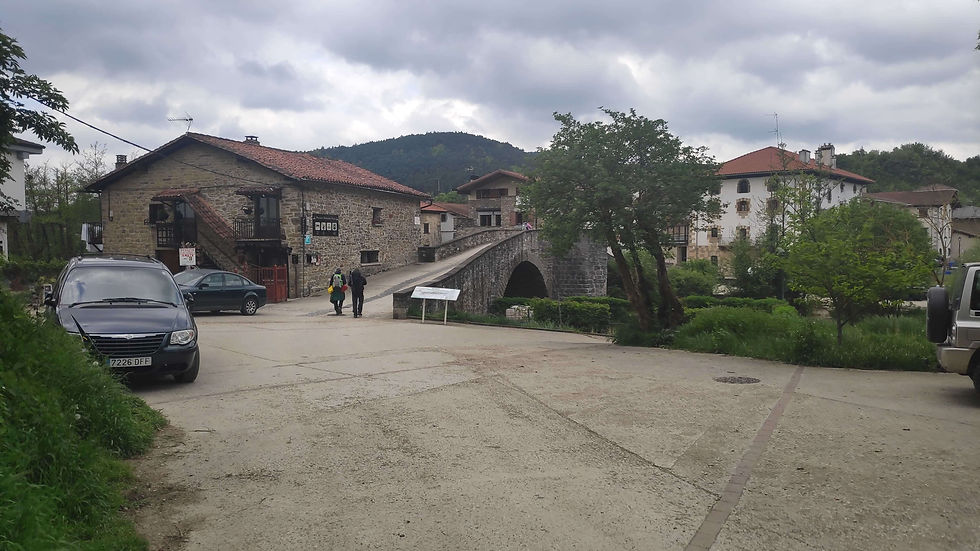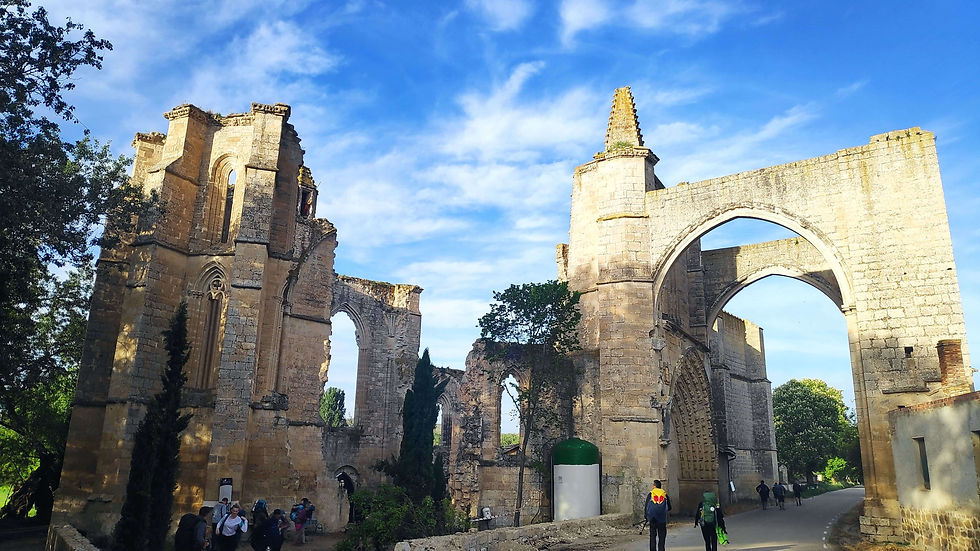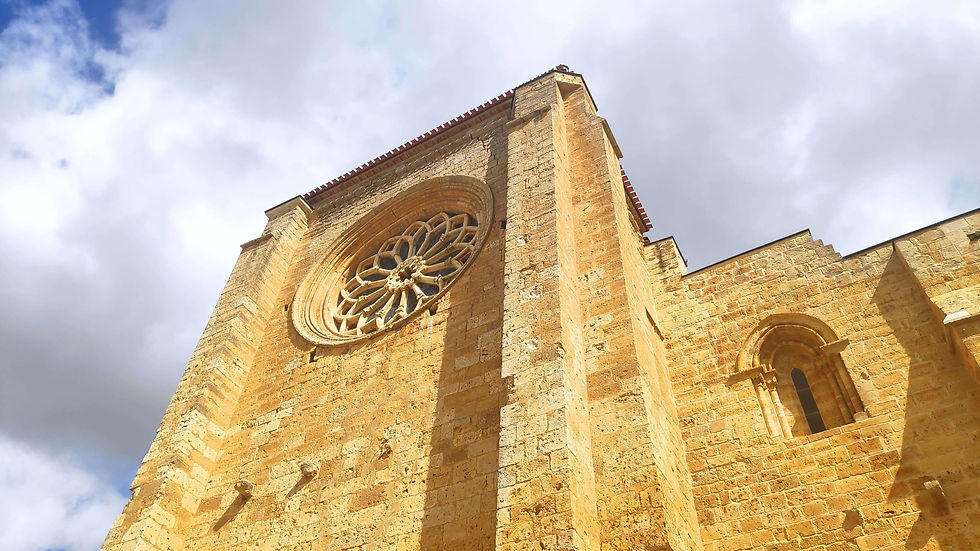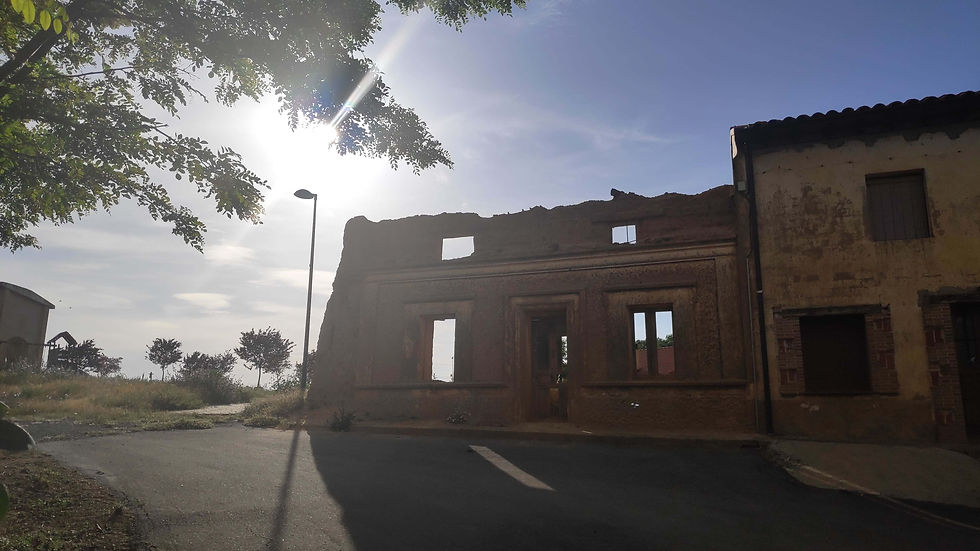Official start:
Saint Jean Pied de Port
Spring: May-June
Autumn: September-October
777-800 km
(depends on the choice of trails along the way)
28-36 days on average
Camino Francés
The Camino Francés is the most famous and popular of the Camino de Santiago routes. The French Camino stretches for nearly 800 km across northern Spain, the route begins In the town of St. Jean Pied de Port and ends at the Cathedral of Santiago de Compostela. On the way you pass fascinating cities, towns and villages such as Pamplona, famous for its San Fermín Festival. La Rioja region known as a famous wine region. Burgos and León with their magnificent cathedrals.
Along the way, crossing the Spain by passing through the various regions of the country and enjoying the changing landscapes; High mountains, dense forests, fields and vineyards and historical architecture.
The Camino and the architecture along its routes are listed as a UNESCO World Heritage Site. For centuries, pilgrims have walked this very route seeking journey, spiritual enlightenment, forgiveness and atonement. Today, many embark on this journey for religious, cultural and personal reasons, each for his own reason. Remember that the French Camino isn't just an ongoing journey; It is a pilgrimage of both mind and body.
Why walk the Camino?
The Camino is first and foremost a journey, a journey that is both for body and soul. Like a trip or a regular vacation, the Camino allows for a detachment from everyday life, but the essential difference is that in a classic vacation you usually do not go through a continuous process of journey towards a destination that is both physical (Santiago de Compostela) and internal to ourselves. The beauty of Camino is its diversity, which is an important part of the journey itself. On the way you will meet changing landscapes and people from all corners of the world who make up the Camino de Santiago. It's an amazing opportunity to meet new people whose differences of age, nationality or opinions don't prevent getting to know and connect with each other.
You'll also have time to get to know and listen to yourself as you walk the Camino trails. Although historically the Camino is a pilgrimage for religious reasons, today the vast majority of Camino walkers do not come for religious reasons. Most people come to go through a spiritual, physical or cultural process. Any reason to set off is suitable for the Camino.

Walking in Navarra region
Who is the Camino for?
There's no doubt that a long, continuous hiking trail can sound intimidating and inaccessible to beginners, but the Camino can suit everyone. You can go on a journey alone or walk with a close friend or family member, even if you don't have time to do the full route. Whether you're looking to take a break from everyday life, have new experiences, meet new people and cultures, or simply embark on a new journey - the Camino is for you. Walking the Camino reveals to its walkers a variety of stories, life lessons, a new perspective and is an opening for changes that will follow. On the Camino you can see people of all ages because the route allows you to adjust the pace of walking according to age, fitness level or time you have. Whether you're a veteran traveler or a beginner, the Camino can be great you. Because the Camino is not a race but a journey along which there are many stopping places (cafes, hostels, etc.) where you can stop for refreshment or sleep. There is always an option to tailor the journey according to your wishes and needs.
When is it recommended to walk the Camino?
The most recommended time to do the French Camino is from April to October (up to the beginning of the rainy season). The Spanish summer (July to August) is very hot, but most locals choose to go during this season because it's their time off – be sure to plan your Camino according to how busy it is. The recommendation is to focus on the May-June, where the road is still green, not very hot and there is less chance of rainfall on the way. Another alternative is in September-October, but remember that most fields and open spaces are dry and without blooming.
The regions along the French Camino
Navarra
The Navarra region, from where the French Camino begins, is located in the Basque Country and borders France along the Pyrenees. This region has a fascinating and complex history, which goes hand in hand with the culture and history of the Basques. This region is characterized by its high mountains, its many streams, the capital of Navarra is Pamplona.
La Rioja
La Rioja is a small autonomous region adjacent to the Navarre region, its capital is the city of Logroño. This region is best known for its wine industry, with more than half of Spanish wine produced there. While walking, the lush landscape of distant vineyards, fields and mountains is one of the most beautiful during the Camino.
Castilla and León
Castilla León is the largest autonomous region in Spain, following the unification of the Kingdom of León and the Kingdom of Castilla in 1983. This area includes the famous Meseta, which is a continuous plateau in the part between the city of Burgos and León. Castilla León is a vast and diverse area that includes many castles that dominate the entire region.
Galicia
Galicia is the northwestern most region of Spain, perched above Portugal where the spoken language is more like Portuguese than Spanish. Galicia's misty green hills are lined with ancient paths, small villages and ancient urban legends. Its long Atlantic coastline is famous for its rocky and impressive beaches.

The regions along the French Camino
Type of trail:
The Camino Frances is a route with not very high difficulty sections, which allows people of different ages and fitness levels to walk it. The road itself combines plains, hills and urban roads and there are no technical or high-difficulty sections except for a few days, such as climbing the Pyrenees on the first day (St-jean Pied de Port - Roncesvalles) or the mountains at the entrance to Galicia. The main difficulty is the long walking distances that go each day, since on the Camino an average daily walk (according to the suggested route) is about 20 km. But don't worry, you can always divide your stopping points so that you can walk distances that suit you. In terms of trail style, the French Way includes dirt roads (50%) and quiet country roads (40%) and walking within an urban environment (10%). The vast majority of the trails are in the countryside and away from the main roads.
Where do you sleep on the French Camino?
There are different types of accommodation available for pilgrims along the Camino Frances. Since this is the most popular route on the Camino de Santiago, the number of places and accommodation options is the most extensive of the various routes. Accommodation can be divided into hostels (municipal and private), guest houses and pensions, hotels and country houses.
Simple and basic hostels that usually belong to the towns themselves and allow accommodation only for pilgrims:
-
The price is between EUR 5 and EUR 10 per person
-
Strictly for pilgrims (you need a pilgrim passport to stay there)
-
In most cases, it is not possible to book in advance, first come first serve principle
-
Check-in usually starts between 12:00 and 14:00.
-
Check out is usually until 8am the next morning.
-
It is not possible to stay more than 1 night.
-
Can include disposable bed linen or for a small fee
-
There is usually a kitchen, sometimes without gas, utensils or cutlery.
-
Most often they are quite large, can accommodate at least 20-40 people on average.
-
Privately run hostels that are suitable for Camino walkers and usually offer better accommodations:
-
Average price between 10 and 15 euros.
-
Not just for the pilgrims, more like hostels where anyone can stay
-
They can be booked in advance
-
Usually open for check-in from 12:00.
-
Check-out until: 9 or 10 am
-
It is possible to stay a few nights.
-
Generally, but not always, cleaner and better quality than public hostels
-
Disposable bed linen is included, some places have plain sheets and bed linen.
-
Sometimes there is a kitchen or there is a bar/restaurant on site.
-
Usually smaller than public hostels
-
Small, mostly family-run guest houses rated from 1 to 3 stars. This option is ideal for those who do not want to sleep in shared rooms and prefer comfort and privacy at the end of the walking day.
There is a wide range of hotels, from 2 to 5 stars, along the French Camino, especially in larger towns and cities.
Small boutique hotels located in rural areas, usually family-run. The buildings tend to be of special character and are restored to very high standards: farmhouses, watermills, manor houses are some of the fantastic buildings converted into country houses.
How much does it cost to walk the Camino?
The Camino is a cheap and convenient travel option because along the way there are villages, towns and cities adapted for Camino travelers. There you will find from affordable hostels (€6-15) to better accommodation options like private rooms, hotels and pensions.
Food expenditure is also quite cheap due to restaurants offering the pilgrim menu (3 courses, wine and bread) at a price of 12-15 euros. Beyond flights and public transportation to get to the starting point and the end point, you have no expenses for getting there – you just walk!
In addition, there may be additional variable expenses such as entrance to museums and cathedrals, laundry, shipping bags and more.
Camino Luggage Transfers
Luggage transfer is a service that allows you to send your baggage to your destinations along the route. The large bag will be sent to the next destination and you will only walk with a small and lightweight daily bag. There are several companies that offer bag transfer on the French Camino, such as Camino Facil, Jacotrans or Correos. They usually cost around €5-8 per bag per stage, but the price may vary depending on distance, weight and season. It can be booked online, by phone or through your property.

Santiago de Compostela
Where do you start the French Camino?
The most well-known and popular starting point is the town of Saint-Jean-Pied-de-Port in France (on the border with Spain). However, you can start the Camino at any of the stopping points along the way, depending on the comfort and time you have. Other well-known starting points: Pamplona, Burgos, León, Sarria (the last major town before the last 100 km on the Camino).
-
Fly to Madrid or Barcelona
-
From Madrid/Barcelona, take a bus/train to Pamplona (called Iruña in Basque). Note that sometimes you take a train to your destination halfway and change to a bus afterwards.
-
From Pamplona catch a bus to St.Jean Pied de Port. There are several direct buses that leave from Pamplona's bus stops (usually from around April to the end of October)
-
-
Fly to Paris - Check Flight Prices
-
From Paris you take a train/bus to Bayonne. You can also fly to Biarritz and another train to Bayonne.
-
From Bayonne Train Station, take a direct train to St. Jean Pied de Port
-


































